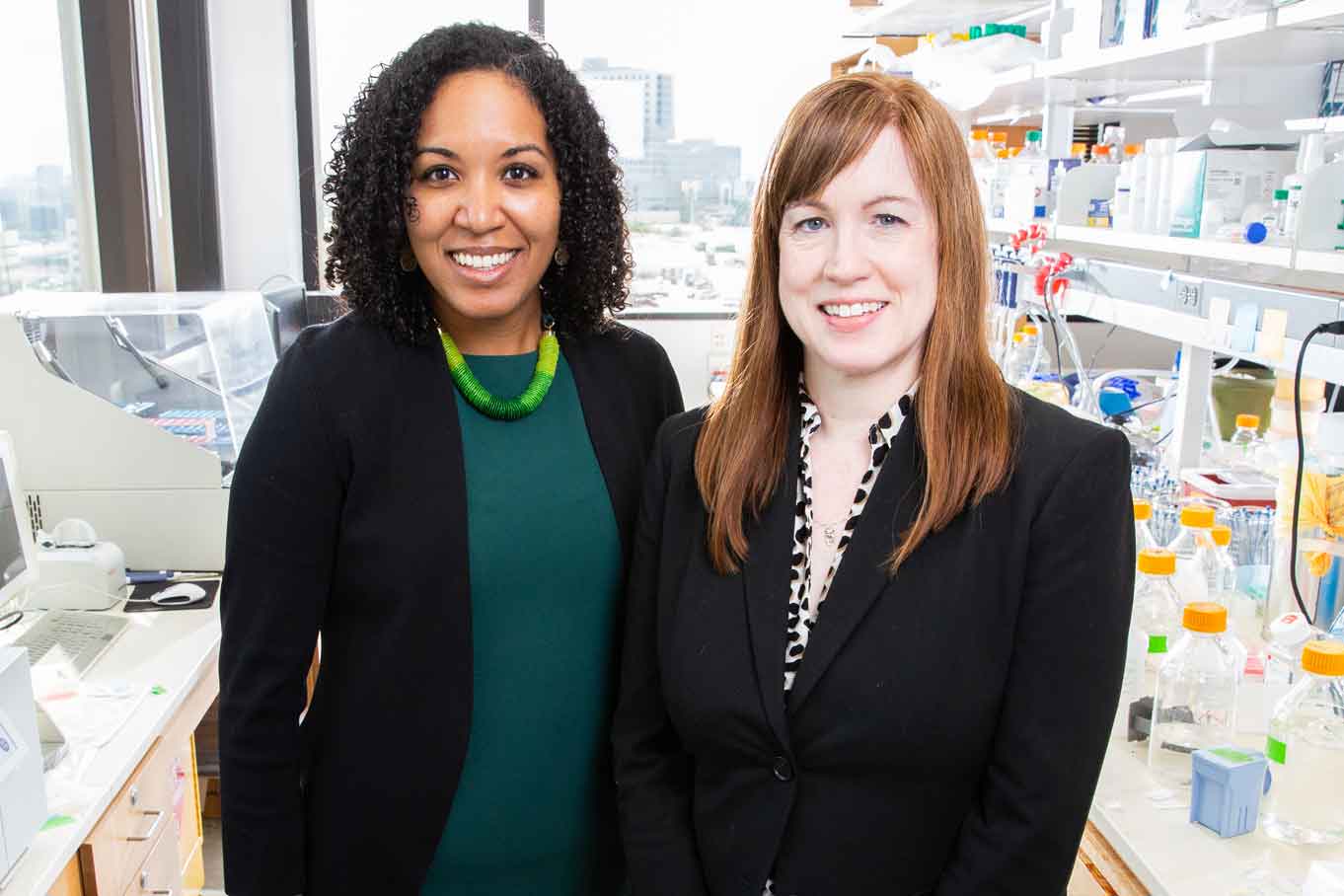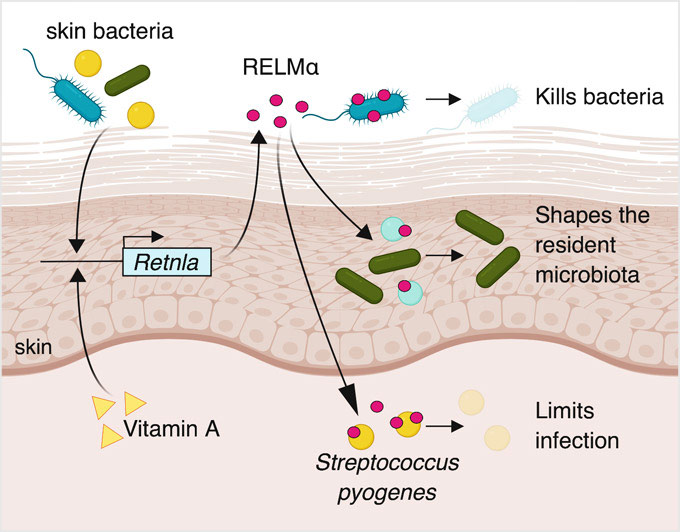Less than skin deep
Bacteria-killing protein on epidermis needs dietary vitamin A to work.

During her dermatology residency, Dr. Tamia Harris-Tryon saw firsthand the healing powers of retinoids in treating skin conditions such as acne and psoriasis. But she couldn’t satiate her need to know the “whys” and “hows” about the effectiveness of vitamin A compounds.
“I saw skin disease resolve when patients were treated with retinoids, and it prompted me to try to find out more information about how these medicines were working,” she says. “I read the literature and asked senior physicians why retinoids worked. The answers were often superficial. There seemed to be a gap in our understanding of why these compounds are effective.”
When Dr. Harris-Tryon was searching for postdoctoral fellowships following her residency at Johns Hopkins University School of Medicine – where she also earned her M.D./Ph.D. – she interviewed with UT Southwestern’s Department of Dermatology and with the Chair of Immunology, Dr. Lora Hooper.
“Dr. Hooper had been studying vitamin A. She also had a series of mouse models in her lab to study vitamin A and its impact on mice and humans,” Dr. Harris-Tryon says.
A perfect mix
The blending of the Hooper lab’s expertise in gastrointestinal biology with Dr. Harris-Tryon’s interest in skin proved to be a powerful match in uncovering some of the mysteries behind the role of vitamin A in skin immunity. In a study published last year in Cell Host & Microbe, the researchers show that a protein in the resistin-like molecule (RELM) family – RELMα – acts as an antibiotic to rapidly kill bacteria. RELMα, which is made by mice, and the corresponding human RELM family protein, called resistin, are stimulated by dietary vitamin A, the study indicates.
“RELMα is the first example of an antimicrobial protein that requires dietary vitamin A for its bacteria killing activity. This finding gives us an important clue about how the skin defends itself against infection, and how skin defense is regulated by the diet,” says Dr. Hooper, corresponding author on the study, who is also a Howard Hughes Medical Institute Investigator and UTSW Professor of Immunology and Microbiology with an additional appointment in the Center for the Genetics of Host Defense.
“We began developing this idea in 2014, and it took years of work to develop the models and tools needed to test our hypothesis,” adds Dr. Harris-Tryon, now an Assistant Professor of Dermatology and Immunology at UTSW and lead author of the study.
To determine how the microbiome impacts immunity, the researchers used Dr. Hooper’s colony of germ-free mice and identified genes that are turned on when the mice are exposed to bacteria.
The team’s experiments on human tissue and mice illuminate a previously unappreciated link between diet and innate immunity of the skin, suggesting why vitamin A derivatives are effective treatments for skin disease, Dr. Hooper explains.
Dr. Harris-Tryon says the significance of this work is twofold. “First, we now show that proteins in the resistin family that are made in the skin are antimicrobial and help fight infection. This result is important because it helps us understand how the skin defends itself against infection. Additionally, our findings link the expression of the antimicrobial protein, RELMα, to vitamin A in the diet.”

Their data show that mice fed a diet deficient in vitamin A made no RELMα and that mice missing RELMα were more susceptible to infection and had different bacterial species on their skin compared with typical mice.
Future studies
Dr. Harris-Tryon says working with Dr. Hooper – one of the nation’s top immunologists known for her research on the commensal or “good” bacteria that inhabit the gut – was an amazing experience.
"Lora is a visionary in the microbiome field. As a mentor, she provides the resources and freedom to make discoveries."
“Lora is a visionary in the microbiome field. As a mentor, she provides the resources and freedom to make discoveries. I’ve been so privileged to work with her and I have learned so much from both Lora and my fellow postdocs,” she says.
From here, Dr. Harris-Tryon – now the Principal Investigator of her own lab in the Department of Dermatology at UT Southwestern – hopes to discover additional molecules that the skin produces to fight infection, as well as uncover the “hows” behind other effective but poorly understood medicines used in dermatology.
“I am also specifically interested in learning more about the sebaceous gland – an oil-producing gland of the skin – and trying to understand how that gland functions in defending the host from infection,” adds Dr. Harris-Tryon, a recipient of a 2019 Young Investigator Award from the American Academy of Dermatology. “It is known that sebaceous glands produce antimicrobial proteins, but much of the biology of this gland is poorly understood.”
Scientists at the National Institutes of Health (NIH) also collaborated on the study. Dr. Hooper’s research is supported by the NIH, The Welch Foundation, and the Howard Hughes Medical Institute. Dr. Harris-Tryon received a Dermatology Foundation Career Development Award, a Burroughs Wellcome Fund Career Award for Medical Scientists, and funding from the UT Southwestern Disease-Oriented Clinical Scholars Program.
Dr. Hooper holds the Jonathan W. Uhr, M.D. Distinguished Chair in Immunology and is a Nancy Cain and Jeffrey A. Marcus Scholar in Medical Research, in Honor of Dr. Bill S. Vowell.

